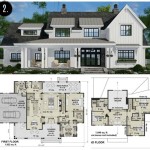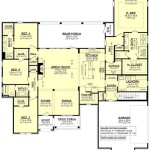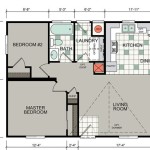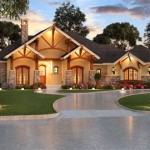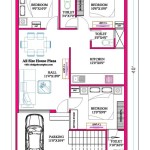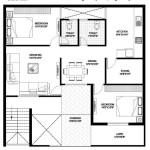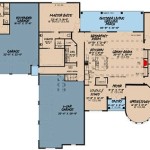Mobile Home Single Wide Floor Plans: A Comprehensive Guide
Mobile homes, particularly single wides, offer an affordable and accessible housing option for many individuals and families. Understanding the nuances of single wide floor plans is crucial for prospective buyers seeking to maximize space, functionality, and comfort within a relatively compact footprint. This article provides a comprehensive overview of single wide floor plans, covering various layouts, key considerations, and common features to assist in making informed decisions.
A single wide mobile home, characterized by its rectangular shape and typically measuring 14 to 18 feet in width, presents unique design challenges and opportunities. The available space necessitates careful planning to accommodate essential living areas, bedrooms, bathrooms, and storage. Effective floor plans prioritize efficient use of square footage while maintaining a comfortable and livable environment. The modular construction of these homes often allows for some level of customization, though structural limitations must be considered.
Understanding Common Single Wide Floor Plan Layouts
Several common floor plan layouts dominate the single wide mobile home market. These layouts are continually refined and adapted by manufacturers to meet evolving consumer needs and preferences. Recognizing the fundamental configurations can simplify the process of evaluating different models and determining which best aligns with individual requirements.
The “end kitchen” layout, as the name suggests, positions the kitchen at one end of the home. This configuration often places the living room at the opposite end, creating a clear separation between the cooking and relaxation areas. Bedrooms are typically located along one side of the home, frequently clustered near a central hallway. This layout is generally favoured for its simplicity and efficient use of space, allowing for a relatively large living area, especially in longer single wide models.
Another popular arrangement is the “center kitchen” layout. In this design, the kitchen is situated in the middle of the home, often serving as a natural divider between the living room and the bedrooms. This arrangement can create a more communal and open feel, facilitating interaction between family members or guests in different areas of the home. However, it may result in a slightly smaller living room compared to the end kitchen layout.
A variation of the center kitchen is the “galley kitchen” floor plan. This features a narrow kitchen situated along one wall, maximizing space efficiency and maintaining an open flow between the living room and dining area. The galley kitchen configuration is often favoured in smaller single wides where space is at a premium. The downside can be limited counter space and storage within the kitchen itself.
Beyond the kitchen placement, variations exist regarding the placement of bathrooms and bedrooms. Some floor plans feature two bedrooms at one end and the master suite at the other, providing a degree of privacy. Other layouts consolidate all bedrooms towards one end. The number of bathrooms typically ranges from one to two, depending on the size and overall design of the home. Some single wides may even include a small laundry area, further enhancing convenience.
Key Considerations When Choosing a Single Wide Floor Plan
Selecting the right single wide floor plan involves careful consideration of various factors, including lifestyle, family size, budget, and personal preferences. Weighing these elements against the available options is essential to making a successful investment. The following points offer guidance in navigating this decision-making process.
Lifestyle
: Assess the occupants’ daily routines and activities. Consider how the floor plan supports these activities. For example, individuals who enjoy cooking may prioritize a larger, well-equipped kitchen, while those who value relaxation might prefer a spacious living room. If frequent entertaining is common, a layout that facilitates social interaction is paramount. Conversely, if privacy and quiet are highly valued, a floor plan that separates bedrooms and living areas is preferable.Family Size
: The number of people who will be living in the home is a crucial factor. Ensure that the floor plan provides adequate bedroom space and bathroom facilities to accommodate all occupants comfortably. Consider future needs as well, such as the potential for a growing family or the need for a guest room. A flexible floor plan that allows for future modifications could also be an advantage.Storage
: Adequate storage space is often a challenge in single wide homes. Evaluate the amount and type of storage provided in each floor plan. Look for features such as built-in closets, cabinets, and shelving. Consider whether there is enough space for storing personal belongings, seasonal items, and household supplies. Some floor plans may offer additional storage options, such as exterior sheds or lofts.Accessibility
: For individuals with mobility limitations, accessibility is a critical consideration. Look for floor plans that offer wider doorways, ramps, and accessible bathrooms. Ensure that the layout allows for easy navigation throughout the home. Consider the placement of essential features, such as the kitchen and bathroom, to minimize the need for movement between different areas.Budget
: The cost of a single wide mobile home can vary depending on its size, features, and location. Establish a budget before beginning the search process and stick to it. Remember to factor in additional costs, such as land rental, utility hookups, and property taxes. Consider the long-term costs of ownership, including maintenance, repairs, and insurance. Comparing different floor plans within a specific price range will help narrow down the options.Common Features and Customization Options
While the basic layout of a single wide floor plan is predetermined, a wide range of features and customization options can enhance livability and personalize the space. Understanding the available options allows buyers to tailor the home to their specific needs and preferences.
Kitchen Appliances
: Single wide homes typically come equipped with standard kitchen appliances, such as a refrigerator, oven, and stovetop. However, buyers often have the option to upgrade to higher-end appliances or choose specific brands. Consider the energy efficiency of appliances and look for features that enhance convenience and functionality. Dishwashers and built-in microwaves are common upgrades.Bathroom Fixtures
: The choice of bathroom fixtures, such as toilets, sinks, and showers, can significantly impact the overall look and feel of the bathroom. Buyers may have the option to upgrade to more luxurious fixtures or choose specific styles. Consider the water efficiency of toilets and showers to reduce water consumption. Accessible bathroom fixtures are also available for individuals with mobility limitations.Flooring
: A variety of flooring options are available for single wide homes, including vinyl, laminate, carpet, and hardwood. Each type of flooring offers different advantages in terms of durability, aesthetics, comfort, and cost. Consider the lifestyle and traffic patterns when selecting flooring. For example, vinyl flooring is a durable and water-resistant option for kitchens and bathrooms, while carpet provides warmth and comfort in bedrooms.Windows and Doors
: The size and placement of windows and doors can significantly impact the amount of natural light and ventilation in the home. Consider the energy efficiency of windows and doors to reduce heating and cooling costs. Double-pane windows and insulated doors are recommended for improved energy performance. The placement of doors should be convenient and allow for easy access to exterior areas.Interior Finishes
: The choice of interior finishes, such as paint colors, wall textures, and trim, can personalize the space and create a desired aesthetic. Consider the overall design style and color palette when selecting interior finishes. Neutral colors can create a sense of spaciousness, while brighter colors can add personality and vibrancy. The finishes should be durable and easy to maintain.Exterior Options
: Depending on the manufacturer and local regulations, buyers may have the option to customize the exterior of the home with features such as siding, roofing, and landscaping. Consider the curb appeal of the home and choose exterior options that complement the surrounding environment. A well-maintained exterior can enhance the value of the home and create a positive first impression.In conclusion, understanding the various single wide floor plans, considering individual needs and preferences, and exploring available customization options are crucial steps in finding the right mobile home. By carefully evaluating these factors, prospective buyers can make informed decisions and create a comfortable and functional living space within the constraints of a single wide footprint.

Single Wide Mobile Home Floor Plans Factory Select Homes

Single Wide Mobile Homes Factory Expo Home Centers

Single Wide Mobile Home Floor Plans The Az

Single Wide Mobile Homes Factory Expo Home Centers

Single Wide Mobile Home Floor Plans Factory Select Homes

Single Wide Mobile Homes Factory Expo Home Centers

Single Wide Mobile Homes Factory Expo Home Centers

Single Wide Mobile Home Floor Plans 2 Bedroom Information Homes

Single Wide Mobile Homes Factory Expo Home Centers

Single Wide Mobile Home Floor Plans Factory Expo Centers


